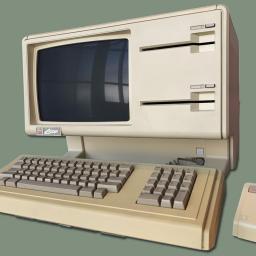 |
by Hansen Hsu on (#68061)
|
 IEEE Spectrum
IEEE Spectrum
| Link | https://spectrum.ieee.org/ |
| Feed | http://feeds.feedburner.com/IeeeSpectrum |
| Updated | 2025-12-16 18:01 |
 |
by Alan Petrillo on (#67YJB)
|
 |
by Joanna Goodrich on (#67XRP)
|
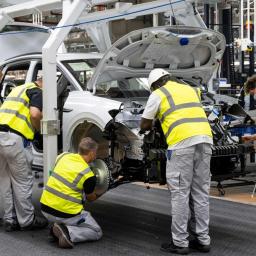 |
by Robert N. Charette on (#67XMM)
|
by Alan Petrillo on (#67W7Q)
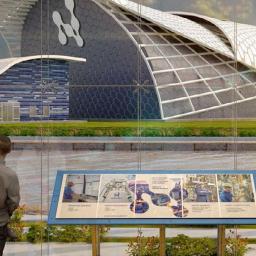 |
by Rahul Rao on (#67VE9)
|
by Eric Schlaepfer on (#67TS9)
by Neena Picardo on (#67TN4)
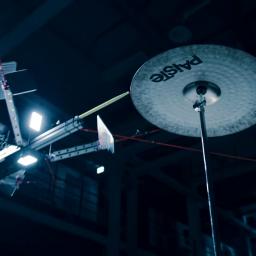 |
by Evan Ackerman on (#67SWW)
|
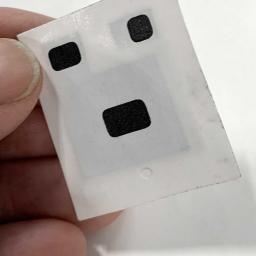 |
by Tekla S. Perry on (#67RVS)
|
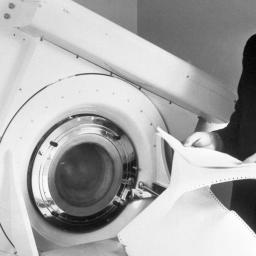 |
by Joanna Goodrich on (#67RSM)
|
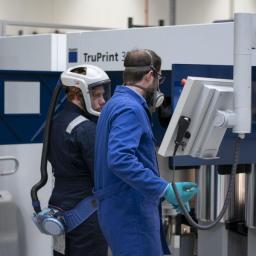 |
by Alan Petrillo on (#67RCN)
|
 |
by Tekla S. Perry on (#67Q8M)
|
 |
by Saurabh Sinha on (#67PAA)
|
 |
by Alan Petrillo on (#67P0P)
|
 |
by Lawrence Ulrich on (#67P0Q)
|
 |
by Lawrence Ulrich on (#67MQ1)
|
 |
by Robert N. Charette on (#67K2X)
|
 |
by IEEE Standards Association on (#67JC4)
|
by Evan Ackerman on (#67J7V)
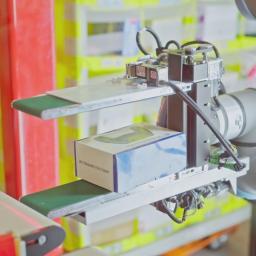 |
by Evan Ackerman on (#67J0K)
|
 |
by Jeff Hecht on (#67GXE)
|
by Joanna Goodrich on (#67FTT)
 |
by Tekla S. Perry on (#67EER)
|
by COMSOL on (#67E9Q)
 |
by Samuel K. Moore on (#67D79)
|
 |
by Harry Goldstein on (#67CGB)
|
 |
by Samuel K. Moore on (#67BYF)
|
 |
by IEEE Spectrum on (#67BW1)
|
by Allison Marsh on (#67B8T)
by Evan Ackerman on (#67B3X)
by Dina Genkina on (#67B3Y)
 |
by IEEE on (#67A80)
|
by Michael Koziol on (#67A2H)
 |
by Glenn Zorpette on (#67A2J)
|
by Prachi Patel on (#6790P)
 |
by Evan Ackerman on (#6790Q)
|
by Amanda Davis on (#67876)
Richard D. SchwartzFormer IEEE chief financial officerLife member, 77; died 22 OctoberSchwartz served as CFO of IEEE from 1993 to 2010. He touched the lives of his colleagues at the organization, many of whom wrote condolences in response to his obituary.After serving in the U.S. Army’s 101st Airborne Division, which specializes in air assault operations. He enjoyed a career as a business executive that spanned four decades.Schwartz, an avid fan of the New York Yankees and Jets, loved to play golf.He earned bachelor’s and master’s degrees in business administration from Iona University, in New Rochelle, N.Y.Vincent J. MancinoFormer manager of engineering reliability at RCALife senior member, 93; died 24 SeptemberFor most of his career, Mancino worked as an engineer at RCA, which was headquartered in New York City.While serving in the U.S. Army during the Korean War, he participated in an atomic bomb test in Nevada.Mancino began his career at RCA in 1951 as an electromagnetic compatibility engineer in Camden, N.J. He briefly left the company in 1961 to join Cornell Dubilier of New Bedford, Mass., as chief engineer in its filter division. He returned to RCA two years later as a senior engineer at its Burlington, Mass., location. There he was responsible for designing and developing computer-controlled automated test equipment.He later transferred to RCA’s astro electronics division in Hightstown, N.J. As a senior engineer, he worked on weather and communication satellites for the U.S. Air Force. He moved up the career ladder and served as manager of engineering reliability.Mancino, a member of the IEEE Electromagnetic Compatibility Society, was inducted in 2007 into its Hall of Fame.He volunteered for several nonprofits in his home state of New Jersey. He helped found the Multiple Sclerosis Society’s Monmouth County chapter and served as its first secretary. A member of the U.S. Coast Guard Auxiliary, he served as a financial officer in Sandy Hook and a flotilla commander in Monmouth Beach.Mancino earned a bachelor’s degree in electrical engineering in 1951 from Rutgers University in New Brunswick, N.J. A decade later he earned a master’s degree in engineering from Drexel University, in Philadelphia.Joel MosesMIT professor emeritusLife Fellow, 80; died 29 MayMoses taught electrical engineering and computer science at MIT for 50 years. He held several leadership positions at the institute and was named an institute professor emeritus in 1999. He probably was best known for developing Macsyma, MIT Project MAC’s symbolic manipulator. It was one of the first computer systems capable of manipulating complex mathematical expressions.Moses earned a Ph.D. in computer science in 1967 from MIT. He conducted his dissertation research under the supervision of IEEE Fellow Marvin Minsky, an artificial intelligence pioneer. Moses’s graduate thesis laid the groundwork for Macsyma.He joined MIT in 1968 as an assistant professor of computer science and was a member of the school’s Artificial Intelligence Laboratory (now the Computer Science and Artificial Intelligence Laboratory), where he developed algorithms that could simplify and integrate mathematical expressions.In 1970 Moses began focusing on Macsyma, which became faster and more accurate than its predecessors. He oversaw its development from 1971 until the system’s release in 1982.“Problems in engineering or physics that would have taken six or seven months to calculate could be solved in under an hour by Macsyma,” according to Moses’s MIT News obituary. Now known as Maxima, it is one of the oldest general-purpose computer algebra systems still in use.Moses was promoted in 1981 to head the electrical engineering and computer science department. That year, he launched a popular series, nicknamed the “Moses Seminar,” at which faculty from each MIT school discussed technology issues. The series led to the creation of a symposium that sought to build bridges between faculty in the humanities, engineering, and science.Later, as dean of engineering, Moses launched Engineering With a Big E, a strategy to include concepts from the social sciences and management in the engineering curriculum.He also oversaw the creation of MIT’s first five-year combined bachelor’s and master’s programs in engineering. As provost, he worked to increase the salaries for research and teaching assistants, and he tripled funding for student association activities.Moses stepped down as provost in 1998 but remained a professor and continued to be active in MIT’s research and administrative programs.In 2004 he founded the Stata Center for Computing, Information, and Intelligence Sciences. It houses the university’s Computer Science and Artificial Intelligence Laboratory, the Laboratory for Information and Decision Systems, and the linguistics and philosophy department.He also helped create MIT’s systems design and management graduate program, which prepares students for leadership positions at engineering companies.He recently served as acting director of MIT’s engineering systems division. The group, which was disbanded in 2015, focused on developing and managing large, complex systems such as global manufacturing and supply chains, multimodal transportation systems, electrical power distribution networks, and health care systems.Moses was a fellow of the American Academy of Arts and Sciences, the Association for Computing Machinery, and the American Association for the Advancement of Science. He was elected a member of the National Academy of Engineering in 1986 for pioneering accomplishments in symbolic algebraic manipulations by computer, and for outstanding leadership in engineering education.He earned bachelor’s and master’s degrees in mathematics from Columbia.Hiroshi KondohFormer chief operating officer of CentellaxFellow, 71; died 15 JanuaryKondoh served as COO at Centellax (now Microsemi), a semiconductor manufacturer in Aliso Viejo, Calif.After earning a Ph.D. in electrical engineering in 1984 from Cornell, Kondoh joined HP as a project manager in Santa Rosa, Calif. He left in 1994 to join Hitachi’s Central Research Laboratories, in Tokyo, as a senior researcher. There he worked on automotive radar and millimeter-wave sensors.In 2009 he joined Centellax as COO and led the marketing and manufacturing departments. When the company was acquired by Microsemi in 2014, he left and began working as a consultant.Kondoh was a member of the IEEE Microwave Theory and Technology Society and advised Japan’s Ministry of Internal Affairs and Communications.George J. Tahu Jr.Sales engineerLife member, 85; died 6 JanuaryTahu was a sales engineer for more than 40 years at HP and Agilent, an HP spinoff, in Cedar Creek, Texas.He served in the U.S. Navy Air Systems Command Reserve Program for eight years before joining HP. He specialized in test and measurement systems before retiring in 2001.Tahu enjoyed spending time with his children, serving as leader of his son’s Boy Scouts troop and filming his daughter’s ice skating competitions and dance performances. He was a longtime member of the Canyon Creek Presbyterian Church in Richardson, Texas.He received a bachelor’s degree in electrical engineering from the University of Texas at Austin.
by Lucas Laursen on (#67877)
 |
by Elie Dolgin on (#6778S)
|
 |
by Peter Fairley on (#676GB)
|
 |
by Charles Q. Choi on (#675WX)
|
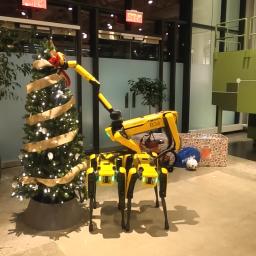 |
by Evan Ackerman on (#6755N)
|
by Robert N. Charette on (#6755P)
by Linus Akesson on (#6751Q)
 |
by Edd Gent on (#67405)
|
by Teledyne on (#67406)
 |
by Kathy Pretz on (#672ZZ)
|
 |
by Kathy Pretz on (#671SC)
|
by Rohde & Schwarz on (#671HG)